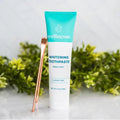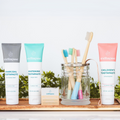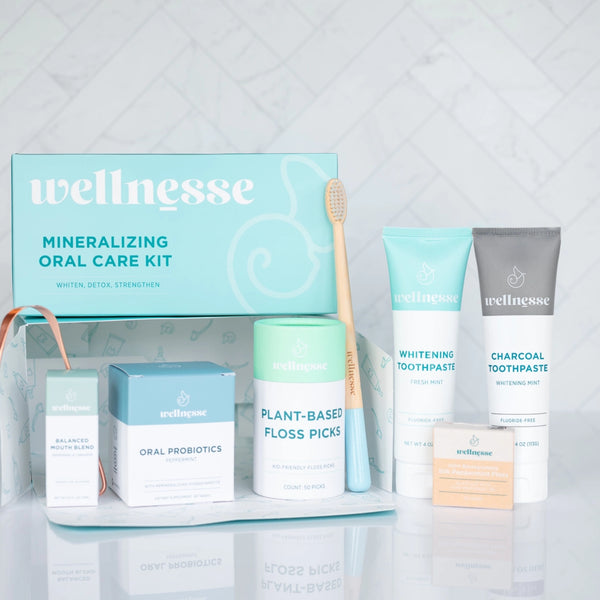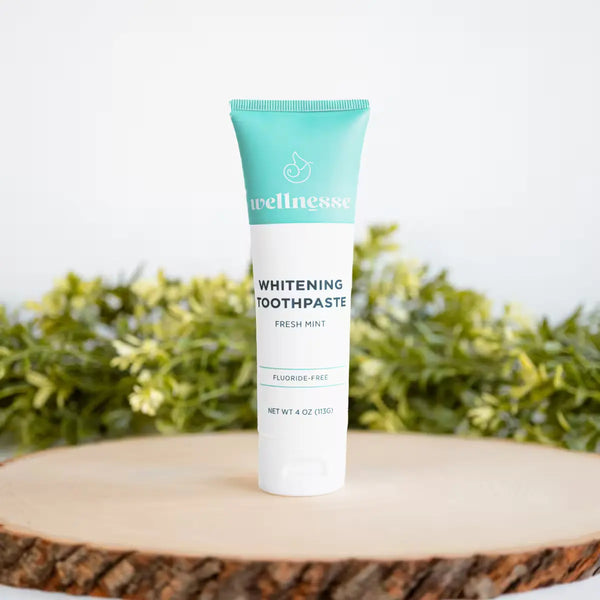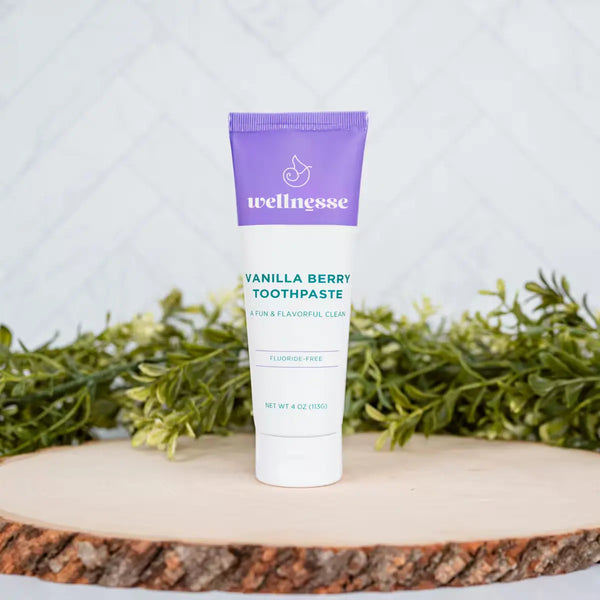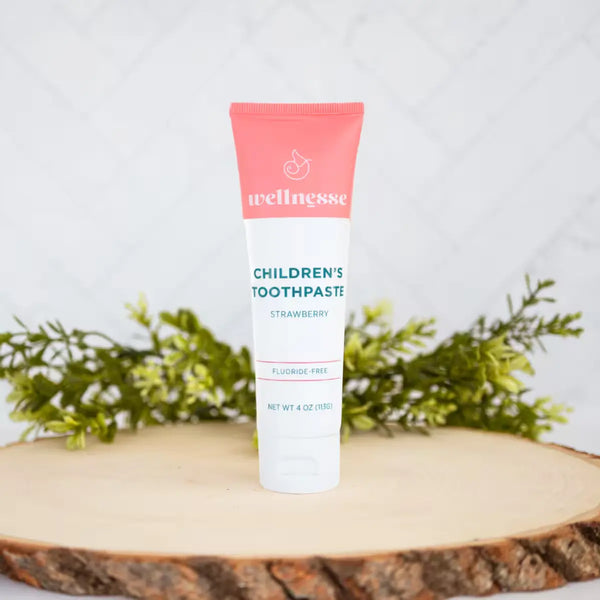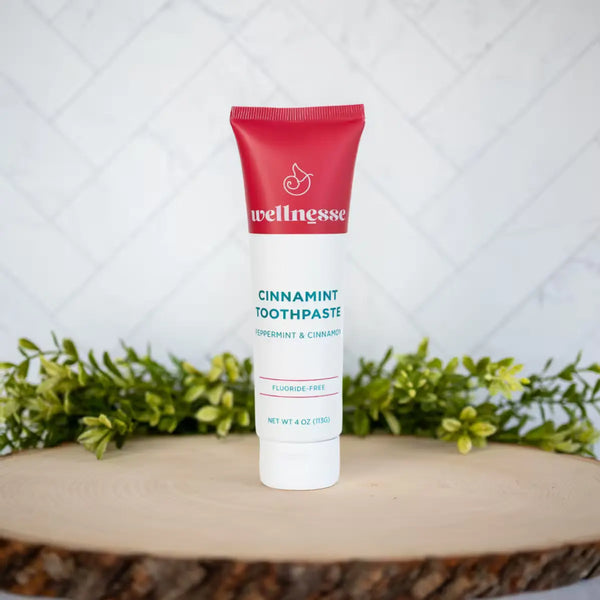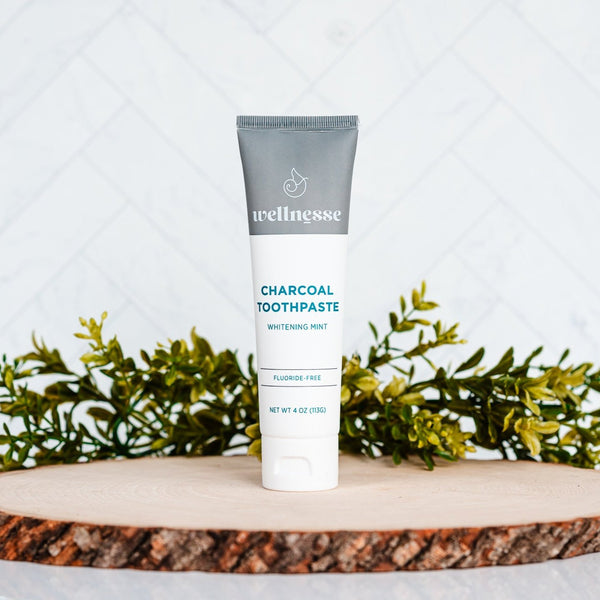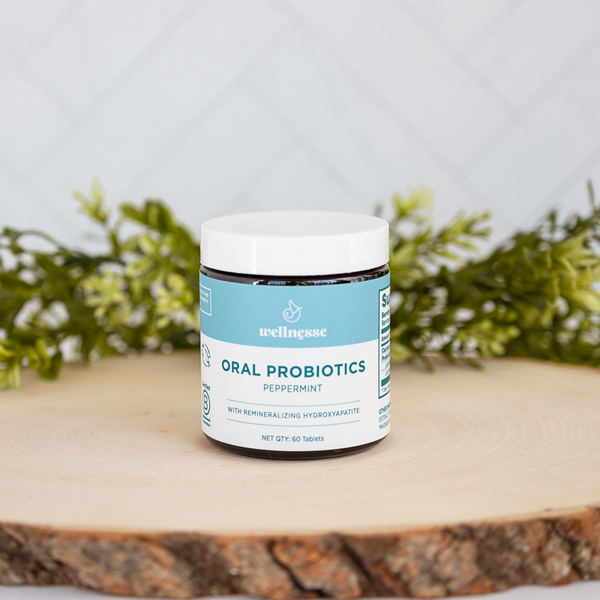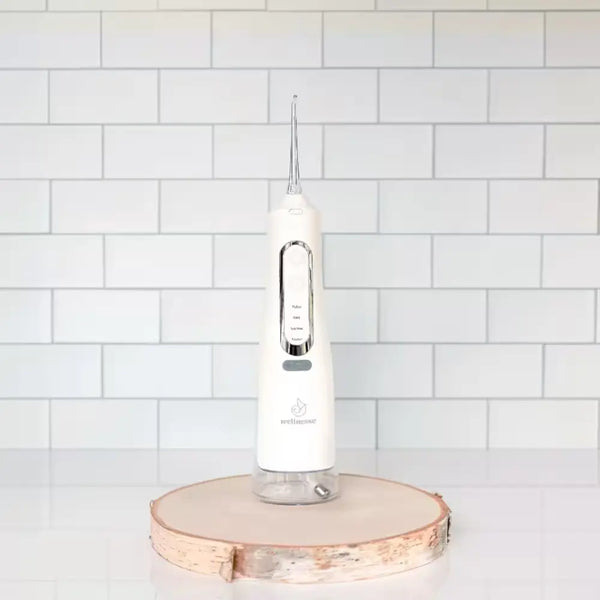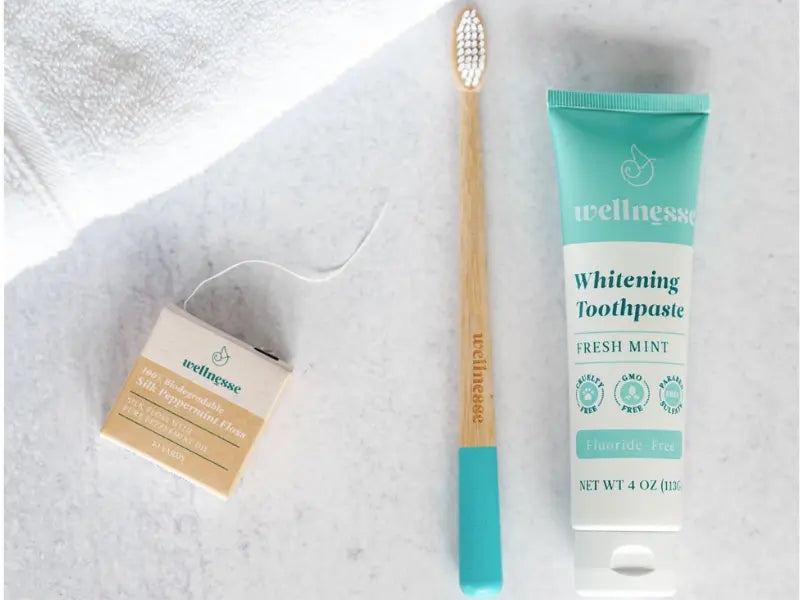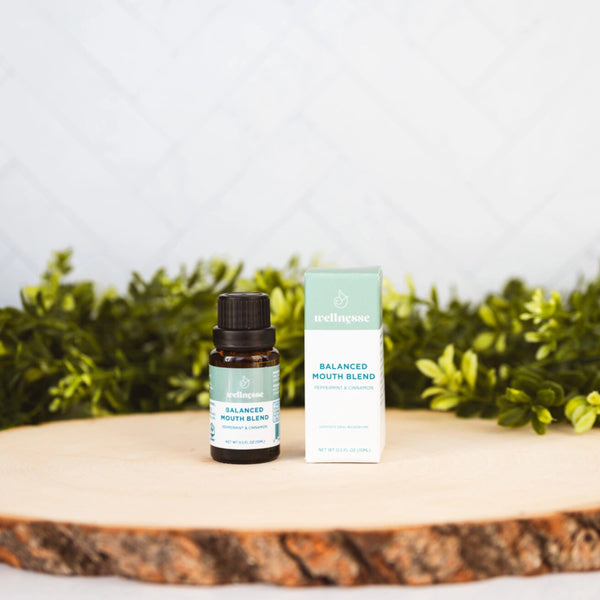For decades, most of us have reached for fluoride toothpaste without a second thought. Fluoride can indeed strengthen enamel and fight decay, yet there are reasons some people are reconsidering its use. If you’ve found yourself curious about alternatives to fluoride toothpaste, you’re not alone. In recent years, a growing number of individuals are exploring natural oral care options that skip fluoride altogether in favor of gentler or more holistic ingredients.
White Spots or Streaks on Teeth (Signs of Fluorosis)
One of the clearest indicators that you or your child might be getting too much fluoride is the appearance of faint white spots, streaks, or mottling on the teeth. Dentists refer to this condition as dental fluorosis, and it occurs when excess fluoride is absorbed while tooth enamel is forming in childhood. It’s essentially a cosmetic issue, but it’s a definite red flag that fluoride intake has been too high during early tooth development. Fluorosis typically happens from swallowing too much fluoride, often from sources like fluoridated drinking water combined with eating or gulping down toothpaste. Young children are especially vulnerable because they may not have the reflex to spit out toothpaste while brushing. If you notice unusual white streaks on your child’s teeth, it could be fluorosis. Cutting down on fluoride exposure in the future can help prevent it from worsening. You might switch your child to a training toothpaste without fluoride.

It’s important to understand that mild fluorosis doesn’t harm the function of the teeth – it mainly affects appearance. However, it’s a clear sign that a child was exposed to more fluoride than needed during the enamel-forming years. In other words, the presence of those white specks is telling you that you’re overshooting the “just right” amount of fluoride. Taking a fluoride-free approach for a while can give you peace of mind that you’re not contributing to further fluorosis. According to the NIH, excessive fluoride intake in early childhood can lead to permanent white lines or dots on the enamel. If you’ve observed these spots, it may be wise to pause and adjust your routine, for example, by using a natural fluoride-free toothpaste for kids and closely supervising their brushing to minimize swallowing.
You (or Your Kids) Swallow Toothpaste Regularly
Frequent ingestion of toothpaste is another strong sign that it might be time to go fluoride-free, at least temporarily. While a small swallow here and there isn’t usually harmful, making a habit of swallowing fluoride toothpaste can lead to stomach upset and, more concerning, cumulative fluoride intake beyond safe levels. Children under six are notoriously prone to swallowing toothpaste. They’re still mastering their brushing technique and often don’t have the coordination to spit effectively. The concern is that swallowing fluoride day after day adds up. In kids, this raises the risk of the fluorosis we discussed above. But even in adults, consuming excess fluoride can cause issues like nausea or gastrointestinal discomfort.
If you notice your child consistently swallowing toothpaste, consider switching to a fluoride-free children’s toothpaste (sometimes labeled “training toothpaste”) until they reliably spit out. Pediatric dental guidelines shifted in recent years – whereas fluoride-free paste used to be recommended until age two, now dentists say a tiny smear of fluoride paste is okay for babies as long as you strictly limit the amount and ensure as little as possible is swallowed. Using a non-fluoridated paste removes the worry, because even if they do swallow, it won’t contribute to fluorosis or an upset tummy. Dentists often recommend fluoride-free toothpaste for very young kids who haven’t learned to spit. It’s a simple way to eliminate one source of accidental fluoride intake during those early years.
Some adults also prefer to avoid swallowing fluoride. For instance, if you’re undergoing certain medical treatments or have conditions that cause dry mouth, you might be using extra toothpaste or mouthwash and inadvertently swallowing more than intended. In such cases, choosing a fluoride-free option could put your mind at ease.
Used With Electric Toothbrushes
One common question among those considering a switch to fluoride-free toothpaste is whether these formulas are safe and effective to use with electric toothbrushes. The short answer is yes, as it is generally compatible with both manual and electric toothbrushes, and there are no inherent risks in pairing the two. Most options are designed to work just like traditional toothpaste in terms of texture, abrasiveness, and cleaning action, which means they will not harm the mechanisms or bristles of an electric toothbrush. Using an electric toothbrush can actually enhance the cleaning power of any toothpaste, including fluoride-free varieties, by providing more consistent and thorough brushing compared to manual brushing alone. Electric toothbrushes are engineered to deliver thousands of brush strokes per minute, helping to remove plaque, debris, and surface stains more efficiently. When paired with a fluoride-free toothpaste, these devices can help maximize the benefits of the toothpaste’s active ingredients by ensuring they are distributed evenly and work thoroughly across all tooth surfaces. This combination can be especially beneficial for individuals seeking a natural oral care routine without sacrificing cleanliness or oral hygiene standards. For those with limited dexterity or who struggle with effective manual brushing, an electric toothbrush can make it easier to maintain good oral health, regardless of the type of toothpaste used.
It’s also important to note that most fluoride-free toothpaste formulas do not contain ingredients that would damage or clog an electric toothbrush. They are typically free from large, gritty particles and harsh chemicals that could wear down brush heads or interfere with the device’s operation.
You Have Allergies or Sensitivities to Toothpaste Ingredients
Another sign that it might be time to go fluoride-free is if you experience frequent mouth irritation, canker sores, or other sensitivities when brushing, and you’ve ruled out common irritants like sodium lauryl sulfate (SLS) or strong flavoring agents. True allergy to fluoride is exceedingly rare, but it has been reported. People with fluoride sensitivity might notice issues like gum irritation, a burning tongue, or even headaches and stomach upset after using a fluoridated product. If you suspect that your toothpaste is making your mouth or body feel worse, not better, it could be worth trying a fluoride-free version to see if the symptoms improve.
Most often, reactions to toothpaste are due to things like artificial flavors, preservatives, or foaming agents, rather than the fluoride itself. For example, cinnamon or peppermint oil used for flavor can cause contact dermatitis in sensitive individuals, and SLS (a detergent) is notorious for causing mouth sores in some people. However, there are cases – albeit very uncommon – where fluoride has been identified as the offending substance. In these cases, the immune system essentially treats fluoride as an allergen. Documented symptoms have included mouth ulcers, skin rashes around the mouth, and gastrointestinal distress immediately after brushing. One dental resource notes that a true fluoride allergy is extremely unusual in the general population, but if you happen to be one of those rare individuals, even small amounts of fluoride can trigger unpleasant reactions.
Even short of an outright allergy, some people feel “sensitive” to fluoride toothpaste. They might experience a mild burning sensation in the mouth or throat, or a transient stomach ache if a bit is swallowed. If you’ve noticed a pattern where brushing your teeth correlates with minor but consistent discomfort, it’s worth investigating. Eliminating fluoride by switching to a more natural, hypoallergenic toothpaste may provide relief. Many sensitive teeth toothpaste formulas on the market are fluoride-free and focus on soothing ingredients. You can find natural pastes with aloe vera, chamomile, or tea tree oil that aim to calm inflammation while cleaning your teeth. Switching to a fluoride-free toothpaste in this scenario serves as a useful experiment. Pay attention to whether your symptoms subside after a few weeks of fluoride-free brushing. If they do, you’ve likely pinpointed a source of irritation that you can easily avoid moving forward. The bottom line is that brushing your teeth should never be a painful or unpleasant experience.

You Prefer Natural or Organic Oral Care Products
Many health-conscious consumers are choosing to avoid certain chemicals in their personal care products, and fluoride is sometimes on that list. If you find yourself gravitating towards more natural oral care options, that’s a strong sign you might be ready to drop the fluoride and embrace a more natural toothpaste.
There’s a broader trend happening in personal care: people are seeking out products that are organic, eco-friendly, and free of ingredients they consider harsh or controversial. Fluoride, while unquestionably effective at preventing cavities, is a chemical that some individuals just don’t want in their bodies if they can help it. Maybe you’re someone who prefers brands that use alternative minerals and plant-based ingredients. Or perhaps you’re concerned about the environmental impact of excess fluoride. These philosophical and health-based preferences are completely valid reasons to go fluoride-free. The demand for natural toothpastes has surged as part of the overall growth in organic personal care – the popularity of fluoride-free toothpaste reflects a broader shift towards products perceived as safer and “cleaner.”
Modern organic toothpaste brands offer fluoride-free formulas using natural ingredients. For example, Wellnesse makes a natural fluoride-free toothpaste with hydroxyapatite (a mineral that helps remineralize enamel) plus herbal extracts to promote oral health. These kinds of products appeal to those who want to avoid artificial additives and chemicals in their daily routine. The look and feel of natural toothpastes can be quite different – often, they’re less intensely sweet or foamy, since they skip the saccharin and SLS found in many conventional pastes.
Scan the label of a typical fluoride-free natural toothpaste. You might see ingredients like xylitol (a natural sweetener that also fights bacteria), coconut oil, tea tree or neem oil (for their antimicrobial properties), or clay for gentle polishing. What you won’t see are things like triclosan, parabens, artificial dyes, or intense synthetic flavors. For many, this is reassuring. You can brush your teeth knowing you’re not putting anything in your mouth that doesn’t align with your standards for “natural” products.
You’re not just avoiding something (fluoride); you’re actively choosing products that fit your values and possibly come from companies with ethical, sustainable practices. As long as you maintain good brushing and flossing habits, a fluoride-free routine can still keep your teeth clean and healthy. After all, the mechanical action of brushing and the plaque-busting power of ingredients like xylitol or herbal oils can do a fine job, without needing fluoride. The key is to find the best natural toothpaste that you enjoy using, so that you’ll brush regularly. If eliminating fluoride from your self-care regimen gives you peace of mind, that’s a perfectly sound reason to make the switch.
You Want an Alternative Way to Strengthen and Protect Your Teeth
One of the most promising replacements for fluoride is a mineral called hydroxyapatite. This is a form of calcium phosphate that makes up the majority of our tooth enamel and dentin. In toothpaste form (often labeled nano-hydroxyapatite), it works by binding to your tooth surface and filling in tiny microscopic weak spots, effectively rebuilding and fortifying the enamel. Think of it as patching potholes in the road, but for your teeth. A high-quality enamel-strengthening toothpaste with hydroxyapatite essentially serves as a toothpaste to restore enamel, filling in microscopic vulnerable spots without the need for fluoride. Hydroxyapatite has been used for decades in Japan and Europe, and recent studies confirm it can prevent cavities just as well as fluoride does. This means you can get comparable protection against tooth decay while following a fluoride-free regimen.
If enamel health is your priority, look for a fluoride-free toothpaste that markets itself as a remineralizing or toothpaste for enamel health. These often contain ingredients like hydroxyapatite to support the enamel’s mineral content directly. Beyond hydroxyapatite and xylitol, researchers are exploring other fluoride substitutes as well. Arginine (an amino acid) and theobromine (an extract from cocoa) have shown promise in strengthening teeth or reducing cavity-causing bacteria. As the science evolves, we’re likely to see more alternatives to fluoride toothpaste that can lay claim to protecting teeth in novel ways. Already, one 18-month clinical trial found that adults using a nano-hydroxyapatite toothpaste had no more cavities than those using a fluoride paste, demonstrating that modern formulas can go toe-to-toe with fluoride
You can choose a toothpaste for sensitive teeth and gums that uses potassium nitrate or hydroxyapatite to calm sensitivity, all without fluoride. By going fluoride-free in this scenario, you’re not sacrificing anything; rather, you’re customizing your oral care to what works best for you. It’s quite empowering to know you have options to keep your teeth strong and healthy. If the idea of a mineral-based, fluoride-free routine appeals to you, that’s a sign your dental regimen is ready for an update. Your enamel will be in good hands, and you might find a new favorite toothpaste in the process.
Whitening and Other Benefits
When exploring teeth whitening options, it's crucial to understand the distinct advantages offered by natural approaches, especially for those who experience sensitivity with conventional methods.
-
Baking Soda (Sodium Bicarbonate): This widely recognized natural ingredient plays a dual role in oral hygiene, acting as both a mild abrasive and a pH balancer. Its finely textured particles gently polish the tooth surface, effectively lifting away accumulated stains without causing damage to the enamel. Beyond its abrasive qualities, baking soda's alkaline nature is instrumental in neutralizing acids within the mouth. This creates a less acidic environment, which is beneficial for overall oral health and contributes to a brighter, healthier-looking smile over time. Its mild yet effective action makes it a cornerstone in many natural whitening formulations, appealing to those seeking a gentle approach to stain removal.
-
Calcium Carbonate: As a naturally occurring mineral, calcium carbonate is a popular choice in natural toothpastes for its effective yet gentle abrasive properties. It excels at removing plaque and surface discolorations that can dull the appearance of teeth. It's fine, crystalline structure allows it to meticulously scrub away these unwanted deposits without being harsh on tooth enamel, making it suitable for regular use. The inclusion of calcium carbonate ensures that teeth are thoroughly cleaned and polished, revealing a brighter, more natural shade beneath the surface stains. This ingredient underscores the commitment of natural toothpastes to safe and non-invasive whitening.
-
Hydrated Silica: Derived from silicon, hydrated silica is a sophisticated abrasive agent engineered explicitly for its effectiveness in polishing teeth and tackling discoloration. Its particles are meticulously ground to an optimal fineness, ensuring they are robust enough to remove stubborn surface stains yet gentle enough to preserve the integrity of tooth enamel. This balance is critical for achieving a whiter smile without compromising dental health. Hydrated silica works by meticulously buffing the tooth surface, eliminating the everyday stains caused by food and beverages like coffee, tea, and wine, restoring the teeth's natural luminosity.
These mild abrasives work by polishing the enamel and removing debris, rather than bleaching the teeth. Some fluoride-free formulas also incorporate activated charcoal, which is believed to help draw out stains and promote a cleaner, fresher appearance. While results can vary from person to person, these natural whitening approaches are generally considered gentle enough for daily use and less likely to cause sensitivity than some traditional whitening products.

Beyond whitening, non-fluoride toothpastes often offer a range of benefits that appeal to those seeking a more ethical or health-conscious oral care routine. Many brands are formulated to be vegan and cruelty-free, meaning they contain no animal-derived ingredients and are not tested on animals. This can be especially important for individuals who are committed to a plant-based lifestyle or who prioritize products that align with their ethical values. Look for certifications such as Leaping Bunny or Vegan Society on packaging, which signal that a toothpaste meets strict cruelty-free and vegan standards. In addition, these non-fluoride oral care products often avoid common allergens and artificial additives, steering clear of ingredients like parabens, sulfates, artificial sweeteners, and synthetic dyes. This not only makes them a safer choice for those with sensitivities but also appeals to anyone looking to minimize their exposure to unnecessary chemicals.
Deciding to go fluoride-free with your toothpaste is a personal choice and one that your own dental health needs, life stage, and comfort level should guide. The best fluoride-free toothpaste for you is one that you will use consistently and that addresses your specific concerns. It’s easy to order fluoride-free toothpaste online and try out a few options to see which one you like most. If any of the five signs above resonate with you, it may be time to give fluoride-free a fair trial. Your smile is unique, and your oral care routine can be too. Listen to what your teeth and body are telling you, and you’ll make the right choice for your health and peace of mind.
Sources
-
ods.od.nih.gov NIH Office of Dietary Supplements – Fluoride (Consumer Fact Sheet)
-
pinegrovefamilydental.com Pine Grove Family Dental – When Might a Dentist Recommend Fluoride-Free Toothpaste?
-
verywellhealth.com Verywell Health – Allergic Reaction to Toothpaste: Signs and Treatments
-
enml.com ENML Health Blog – The Rise in Popularity of Fluoride-Free Toothpaste
-
technologynetworks.com Technology Networks – Alternative to Fluoride Toothpaste Succeeds in Clinical Trial
